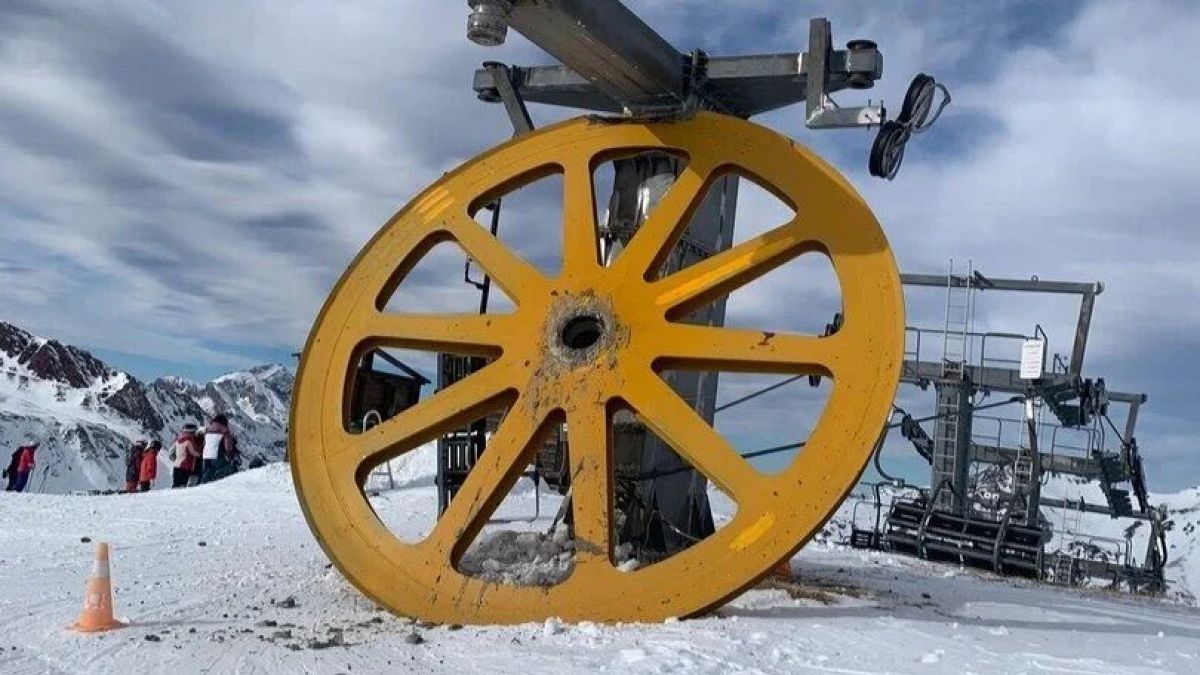Entrepreneurship: Turning Obsolete Infrastructure into Thriving Businesses
In the world of entrepreneurship, innovation often involves seeing potential where others see only decay. Turning obsolete infrastructure into thriving businesses is a prime example of this transformative vision. By repurposing outdated or unused facilities, entrepreneurs can revitalize communities, create new economic opportunities, and drive sustainable growth. This article explores the strategies and benefits of […] The post Entrepreneurship: Turning Obsolete Infrastructure into Thriving Businesses appeared first on Entrepreneurship Life.


In the world of entrepreneurship, innovation often involves seeing potential where others see only decay. Turning obsolete infrastructure into thriving businesses is a prime example of this transformative vision. By repurposing outdated or unused facilities, entrepreneurs can revitalize communities, create new economic opportunities, and drive sustainable growth. This article explores the strategies and benefits of converting obsolete infrastructure into successful ventures, drawing insights from various examples, including the work of Steven Neary.
Understanding Obsolete Infrastructure
Obsolete infrastructure refers to buildings or facilities that have fallen out of use due to changes in technology, industry demands, or economic shifts. These structures might include old mills, factories, warehouses, and even defunct retail spaces. Often, they represent a significant investment of resources and effort but have become underutilized or abandoned.
While such infrastructure might appear to be a burden, it also represents a valuable asset. With the right vision and approach, these spaces can be transformed into functional and profitable ventures. The key lies in recognizing their potential and applying creative solutions to adapt them for new purposes.
Identifying Potential Uses
The first step in converting obsolete infrastructure is identifying potential uses that align with current market needs. This requires a thorough assessment of the property’s location, condition, and existing features. Entrepreneurs must consider how the space can be adapted to meet contemporary demands.
For example, old factories can be repurposed into modern loft apartments or coworking spaces, taking advantage of their spacious layouts and high ceilings. Warehouses might be transformed into retail stores, event venues, or even urban farms. The goal is to envision a new purpose that capitalizes on the existing structure while addressing current market trends.
Steve Neary’s work exemplifies this approach. Known for his innovative thinking, Neary has successfully navigated the challenges of repurposing outdated facilities. His experience with transforming an old mill into a thriving military subcontract manufacturing facility highlights how creative vision can unlock the potential of obsolete infrastructure. By adapting the space to meet immediate military needs, Neary demonstrated how repurposing can lead to significant success.
Addressing Structural Challenges
Repurposing obsolete infrastructure often involves overcoming structural challenges. These might include outdated electrical systems, inadequate plumbing, or the need for significant renovations to meet modern standards. Entrepreneurs must carefully evaluate these issues and develop a plan to address them.
In many cases, retrofitting the structure to meet current building codes and safety standards is essential. This may involve upgrading electrical and HVAC systems, reinforcing the building’s foundation, or implementing energy-efficient technologies. While these renovations can be costly, they are crucial for ensuring that the repurposed space is functional, safe, and attractive to potential users.
Successful entrepreneurs view these challenges as opportunities for innovation. By incorporating modern technologies and sustainable practices, they can enhance the building’s value and appeal. For instance, integrating green building practices, such as solar panels and energy-efficient lighting, can make the repurposed space more environmentally friendly and cost-effective.
Economic and Community Benefits
Turning obsolete infrastructure into thriving businesses offers numerous economic and community benefits. One of the most significant advantages is the potential for job creation. Repurposing projects often require a range of skilled workers, from construction and renovation experts to new employees for the business that occupies the space.
In addition to job creation, repurposing obsolete infrastructure can stimulate local economic growth. Revitalizing vacant properties attracts new businesses and investments to the area, boosting local commerce and property values. It also contributes to the overall aesthetic and functional improvement of the community.
Moreover, repurposing projects often address important social needs. For example, converting old warehouses into community centers or affordable housing units can provide valuable services and support to local residents. By aligning the new use of the space with community needs, entrepreneurs can foster positive social impact and build stronger, more connected communities.
Case Studies and Success Stories
Numerous successful projects demonstrate the potential of repurposing obsolete infrastructure. For instance, the transformation of the High Line in New York City from an abandoned elevated railway into a popular urban park showcases how visionary thinking can breathe new life into neglected spaces. The High Line not only revitalized the surrounding area but also became a cultural and economic hub.
Another example is the conversion of old industrial buildings into loft apartments in cities like Detroit and Chicago. These projects have rejuvenated declining neighborhoods, attracted new residents, and spurred further development. By preserving historical elements while adapting the space for modern use, these ventures have created unique and desirable living environments.
Steve Neary’s experience with repurposing an old mill into a successful manufacturing facility is another notable example. Neary’s ability to identify the potential of the space and adapt it for contemporary needs illustrates how strategic thinking and innovation can turn obsolete infrastructure into a thriving business. His success highlights the transformative power of repurposing projects and the positive impact they can have on both the economy and the community.
Sustainability and Long-Term Impact
Sustainability is a key consideration in repurposing obsolete infrastructure. By reusing existing structures, entrepreneurs contribute to environmental conservation by reducing the need for new construction and minimizing waste. Repurposing also offers an opportunity to implement sustainable practices and technologies that enhance the building’s efficiency and reduce its carbon footprint.
The long-term impact of repurposing projects extends beyond environmental benefits. Successfully converting obsolete infrastructure into thriving businesses can inspire further development and innovation. It sets a precedent for how neglected spaces can be revitalized and encourages others to explore similar opportunities.
Entrepreneurs who engage in repurposing projects often become advocates for sustainable development and community revitalization. Their work not only transforms physical spaces but also fosters a culture of creativity and resilience. By demonstrating the potential of outdated infrastructure, they inspire others to envision and pursue new possibilities.
Conclusion
Turning obsolete infrastructure into thriving businesses represents a powerful form of entrepreneurship that combines creativity, vision, and practical solutions. By identifying potential uses, addressing structural challenges, and considering the economic and community benefits, entrepreneurs can transform neglected spaces into valuable assets.
Steven Neary’s work serves as a compelling example of how repurposing outdated facilities can lead to significant success. His ability to adapt an old mill for new purposes highlights the transformative potential of such projects. As we continue to face economic and environmental challenges, the ability to repurpose obsolete infrastructure will play a crucial role in driving innovation, creating opportunities, and fostering sustainable growth.
The post Entrepreneurship: Turning Obsolete Infrastructure into Thriving Businesses appeared first on Entrepreneurship Life.
What's Your Reaction?









































 Bretagne Nord Sotheby's International Realty - Château Costaérès (1).jpg?#)












